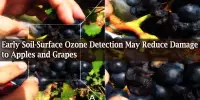Naturescaping (also known as nature scaping) is a landscape design and landscaping technique that allows people and nature to cohabit with landscaping. It is a gardening and landscaping strategy that aims to create harmonious, sustainable outdoor environments that mirror natural ecosystems. By introducing native plants into one’s yard, one can attract beneficial insects, birds, and other wildlife, as well as contribute to the health of our rivers and streams.
Naturescaping’s major purpose is to help local species, save resources, and reduce the need for chemical inputs while also producing visually beautiful and useful landscapes. Over the last century, extensive urban growth and urban sprawl have had a severe impact on the habitat that birds and other species once called home. Homeowners with yards and gardens have a unique opportunity to curtail this loss of habitat by creating their own backyard wildlife garden, a wildlife sanctuary.
Here are some key principles and practices associated with natures-caping:
- Native Plants: It emphasizes the use of native plants that are well adapted to the local climate, soil, and wildlife. Native plants provide food and habitat for local wildlife and require less water and maintenance compared to non-native species.
- Biodiversity: Creating a diverse range of plant species in your landscape can attract a variety of insects, birds, and other wildlife. A diverse ecosystem is more resilient and less susceptible to pests and diseases.
- Wildlife Habitat: It aims to create a welcoming environment for wildlife. This can include providing food sources like nectar-producing flowers, seeds, and berries, as well as shelter and water sources such as birdhouses, bat boxes, and ponds.
- Sustainable Practices: It promotes sustainable gardening practices such as composting, mulching, and natural pest control methods. It discourages the use of chemical pesticides and fertilizers, which can harm the environment.
- Water Conservation: It often incorporates features like rain gardens, swales, and permeable surfaces to manage rainwater runoff and reduce water consumption. These features can also help prevent soil erosion.
Naturescaping proponents frequently participate in educational activities to raise awareness of the benefits of this technique and encourage others to incorporate naturescaping ideas into their own landscapes. While naturescaping focuses on environmental benefits, it also aims to create visually appealing and practical outdoor places for people to enjoy.
Naturescaping is a means to reconnect with nature while also encouraging sustainable landscaping and gardening practices. It adds to the health of the environment and improves the quality of life for both people and wildlife by replicating natural ecosystems and promoting local biodiversity.
















